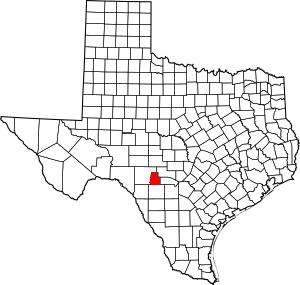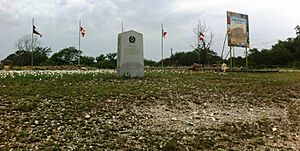National Register of Historic Places listings in Real County, Texas facts for kids
Real County is a beautiful place in Texas. It has a special history! All across the United States, there are important places that tell us about the past. These places are listed on something called the National Register of Historic Places. This list helps protect buildings, sites, and objects that are important to American history.
In Real County, there is one very special place that has been added to this important list. It helps us remember the early days of Texas.
Contents
Real County's Historic Treasure
The National Register of Historic Places is like a hall of fame for historic sites. When a place is added to this list, it means it's recognized as important to the history of a state or the entire country. This recognition can help protect the site and sometimes even provide money to help take care of it.
Real County is home to one such historic site. It is a reminder of the early Spanish missions in Texas.
Mission San Lorenzo de la Santa Cruz
The only site in Real County listed on the National Register of Historic Places is the Mission San Lorenzo de la Santa Cruz. This historic mission is located north of Camp Wood, Texas, off State Highway 55. It was officially added to the National Register on July 14, 1971.
What Was a Mission?
In the past, a mission was a special settlement built by Spanish priests. They came to new lands to teach people about their religion and to expand the Spanish empire. Missions often included a church, living quarters, workshops, and fields for farming. They were important centers for both religion and daily life.
History of San Lorenzo
The Mission San Lorenzo de la Santa Cruz was built in the 1760s. It was part of a larger effort by Spain to establish control and spread Christianity in Texas. The mission was meant to serve the local Native American groups, especially the Lipan Apache.
Life at the mission was not always easy. There were challenges from other Native American groups and difficulties with supplies. Despite these challenges, the mission played a role in the history of the region for several years. Today, the remains of the mission remind us of this important period in Texas history.



